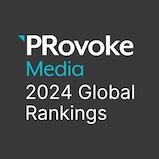Paul Holmes 06 Jul 1993 // 11:00PM GMT
The public relations industry is generally impressed with Pepsi-Cola's handling of one of the more bizarre crises of the past few years: a weeklong series of apparent hoaxes alleging the discovery of syringes and other foreign items in cans of Deit Pepsi.
The first case was reported by an elderly couple in Tacoma, Washington, who had left a can of Deit Pepsi overnight, and the next morning claimed to have found a syringe inside. Their first call was to their lawyer, who promptly called the press and local health officials, who then notified the police. That was on Thursday June 10.
The second case was reported by a woman in Federal Way, Wash., just ten miles away from Tacoma, the next day. The Food & Drug Administration, noting that both cases involved a company bottler in Washington state, warned consumers in the Pacific Northwest to pour their soda into a glass before drinking. Pepsi was puzzled, and made executives from its local bottler, Alpac Corporation, available to the media.
No recall was ordered by the FDA, because there were no reports of injuries, nor any indication that the syringes contained any harmful substance. The company considered a voluntary recall but decided against it, according to public affairs manager Andrew Giangola, because "the FDA told us there was no need, that there wasn't a health risk."
Within days, however, reports were pouring in to Pepsi headquarters from media outlets all around the country: one woman in Portland said she found two syringes in a single glass; in New York a man claimed he accidentally swallowed two pins that were in a Pepsi bottle; in Beach City, Ohio, a woman said she found a sewing needle in one can; in Jacksonville, Fla., a man reported a loose screw in his soda. The ultimate list of items recovered from beverage containers in the week or so the crisis lasted included a bullet, a crack vial and a blob of mysterious brown goo.
The company recognized the magnitude of the crisis when the first report from outside the Washington area became known, and pulled together a team of 12 company executives who would form the core of the crisis team for the duration of the story. By the following Tuesday, company president Craig Weatherup was making the rounds of TV newsrooms, and a company video news release and press release—with graphics—were being circulated, explaining the mechanics of the production process and the impossibility of inserting foreign objects during that process.
"We've gone through every can line, every plant, numerous records," said Weatherup in an interview. "All th evidence points to syringes going into the cans after they were opened."
Pepsi also worked closely with the FDA. Commissioner David Kessler was at least as visible as Weatherup and in some cases being even more explicit about his belief that the tampering claims were hoaxes, charges Pepsi was not in a position to have made as long as there was even a fraction of one per cent doubt that it was blameless.
The FDA's assistance was also important in reassuring retailers, and in ensuring that while one or two smaller, less sophisticated supermarkets did pull Pepsi off the shelf, not a single larger supermarket chain did so. Early research shows that the tampering claims had little or no impact on sales, although the company's share price did drop almost a dollar in the first few days of the crisis.
On Tuesday, shortly before Craig Weatherup and Kessler were scheduled to appear together on ABC's Nightline to explain why they believed the media was in the grip of a major hoax, the FDA announced the first arrest on charges of filing a false report, a federal offense that is punishable by five years in prison and a $250,000 fine.
Then the company caught a break. A surveillance camera in a supermarket in Aurora, Colo., captured a woman shopper apparently inserting a syringe into a can of Diet Pepsi. The company copied the tape and included it in a video news release package that was sent to television stations around the country.
The company also faxed daily morning updates on the crisis to its 600 offices, distribution centers and bottlers nationwide, asking them to reassure retailers that the products were safe. An 800 number was established to take consumer calls.
Kessler called a press conference to insist that the notion of a nationwide tampering with Pepsi product was unfounded, and to suggest that "the complains of the past week follow the classic pattern of copycat hoaxes." By the end of the week, there had been more than 50 tampering claims and more than a dozen arrests for filing false claims.
On Thurday, Pepsi's ad agency, BBDO Worldwide, had put together a print ad that was the company's only paid placement in response to the crisis. The headline read: "Pepsi is pleased to announce.... nothing." The text explained that: "As America now knows, those stories about Diet Pepsi were a hoax. Hundreds of investigators have found no evidence to support a single claim." It concluded by thanking "the millions of you who have stood with us." It ran in USA Today, The New York Times and about a dozen other major newspapers on the following Monday, by which time the crisis was effectively over.
Experts point out that since the Tylenol crisis of 1982, claims of product tampering have been considerably more common, but that most turn out to be false alarms. Says Park Dietz, a forensic scientist and consultant to the FBI: "More than 90% of reports of product tampering turn out to be false alarms."
Dietz says that each nationally publicized tampering incident typically generates 30 more claims. He would like to see news organizations limit their coverage of tampering until a responsible agency believes there is a genuine health risk. Some of the claimants were obviously pranksters; others seemed to believe that they could gain financially, perhaps by suing the company; others apparently wanted nothing more than their 15 minutes of fame, and realized that the media would be willing accomplices.
According to N.G. Berrill, a psychologist with the New York Forensic Mental Health Group who was quoted on the subject in Time magazine: "Many Americans are generally angry at large conglomerates and believe that a corporation can afford to pay a few injury claims."
Certainly, public relations executives at Gerber can testify to that tendency. In 1986, the company faced an epidemic of charges—which spread according to a pattern strikingly similar to the one in this case—that its baby food products contained ground glass. Some parents apparently went so far as to feed slivers of glass to their infants in order to strengthen their case against the company.
The public relations industry generally has nothing but praise for the way Pepsi handled the crisis. The comments of Ron Rogers, president of Rogers & Associates in Los Angeles and an expert in crisis management, were typical: "The most important thing was to keep everyone up to date and to show concern. It's a logistical nightmare but they did it, and I think they did it very well."
Some, however, say the company should have responded more firmly when the first two reports in Washington state became national news stories. "They were a little late in getting out in front of it," says Bill Southard, president of Earle Palmer Brown in New York. "Initially, they tried to low key it. But once they got the president out there in the media he came across as very sincere, very concerned, and that was good."
The strongest criticism came from Jack Levin, a professor of sociology and criminology at Northeastern University in Boston, who said the company had not persuaded the public "that it cared as much about customers as money" and who suggested that Pepsi should have ordered a recall. Such comments, made before it became apparent that the story was a hoax, look less than brilliant with hindsight, and show the dangers inherent in commenting on such cases while they are still being played out.
In the long term, the way the company handled the crisis may actually benefit sales, according to some observers. Doug Hall, president of research company Richard Saunders Inc., says the incident has made consumers more sympathetic towards the company: "There's a lot of sympathy I'm sensing from consumers. People are cheering for Pepsi. It helps that Pepsi is a very friendly company. Its advertising is hip, it's a solid company."



































.jpg)

















